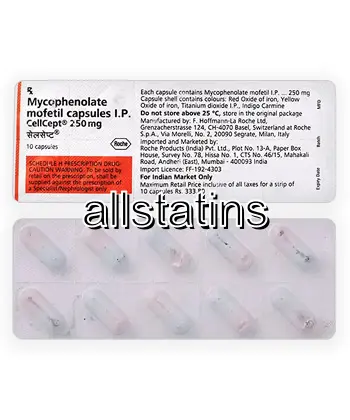Buy Mycophenolate Mofetil (Mycofenolate Mofetil) Online in Australia
| Package | Dosage | Price | Price per Dose | |
|---|---|---|---|---|
| Dosage: 500mg | ||||
| 30 pill | 500mg | AUD424.64 | AUD14.16 | |
| 20 pill | 500mg | AUD373.89 | AUD18.70 | |
| 10 pill | 500mg | AUD224.32 | AUD22.44 | |

Mycophenolate Mofetil Description
What is Mycophenolate Mofetil?
Mycophenolate mofetil is an immune-suppressing medicine used after organ transplantation to help prevent rejection. It is sold in tablet form or as an oral suspension and is a common part of the standard regimens for kidney, heart, and liver transplants. The active ingredient is mycophenolic acid in a mofetil salt, designed to reduce the activity of white blood cells that could attack a new organ. It is typically prescribed together with other drugs such as a calcineurin inhibitor and steroids to form a balanced immunosuppressive strategy.
How does it work?
The drug works by inhibiting an enzyme that lymphocytes need to make DNA and grow. By lowering the production of certain immune cells, it reduces the body's immune response against a transplanted organ. Because the immune system is dampened, patients need careful monitoring for signs of infection and other side effects. The effect is intended to be steady and gradual, not immediate, so adherence is very important.
Who should consider it?
Mycophenolate mofetil is prescribed for people who have received a transplanted organ and need ongoing protection against rejection. It is not a cure for transplantation issues by itself, and it is not suitable for everyone. Your doctor will review your medical history, current medicines, and potential risks before starting therapy. Pregnant or trying-to-conceive patients should discuss options in depth due to significant risks to a fetus.
Dosing and administration
The dosage is individualized and depends on the type of transplant, other medicines being used, and how well the body tolerates the drug. It is usually taken twice daily with or without food, but certain schedules may vary. Do not change doses without a doctor’s advice. For the suspension, precise measuring devices are important to ensure accuracy. Regular blood tests and checks with your healthcare team help keep the treatment on track.
Common and serious side effects
Side effects frequently reported include nausea, vomiting, diarrhea, upset stomach, and headaches. Some people notice low white blood cell counts, which can raise infection risk, or a drop in red cells leading to fatigue. Weight changes and mouth ulcers may also occur. Very rarely, there can be severe infections or liver enzyme changes. If you notice unusual bruising, fever, severe abdominal pain, or yellowing of the skin, seek urgent medical attention.
Warnings and precautions
Mycophenolate mofetil can increase the risk of serious infections and certain cancers over time because it weakens the immune system. It may cause birth defects or fetal loss, so effective contraception is required for people who could become pregnant. Do not use during pregnancy unless clearly directed by your physician. Breastfeeding is generally not recommended, as the drug can pass into breast milk. Tell your doctor about all medicines you take, including herbal products and over-the-counter drugs, to avoid dangerous interactions.
Drug interactions and monitoring
Several medications can affect how mycophenolate works or raise the risk of side effects. Antacids, certain antibiotics, and some immunosuppressants may interfere with absorption or effectiveness. Regular blood work is common to watch levels and organ function, especially liver and kidney measures. If you experience new symptoms, infections, or dehydration, contact your healthcare team promptly, as adjustments to therapy may be needed.
Storage and handling
Store tablets at room temperature in their original container away from moisture and heat. Shake suspensions before use and keep them tightly closed. Use the dosing device provided to ensure accuracy. Keep all medicines out of reach of children and pets, and dispose of unused portions according to local guidelines or pharmacist instructions.